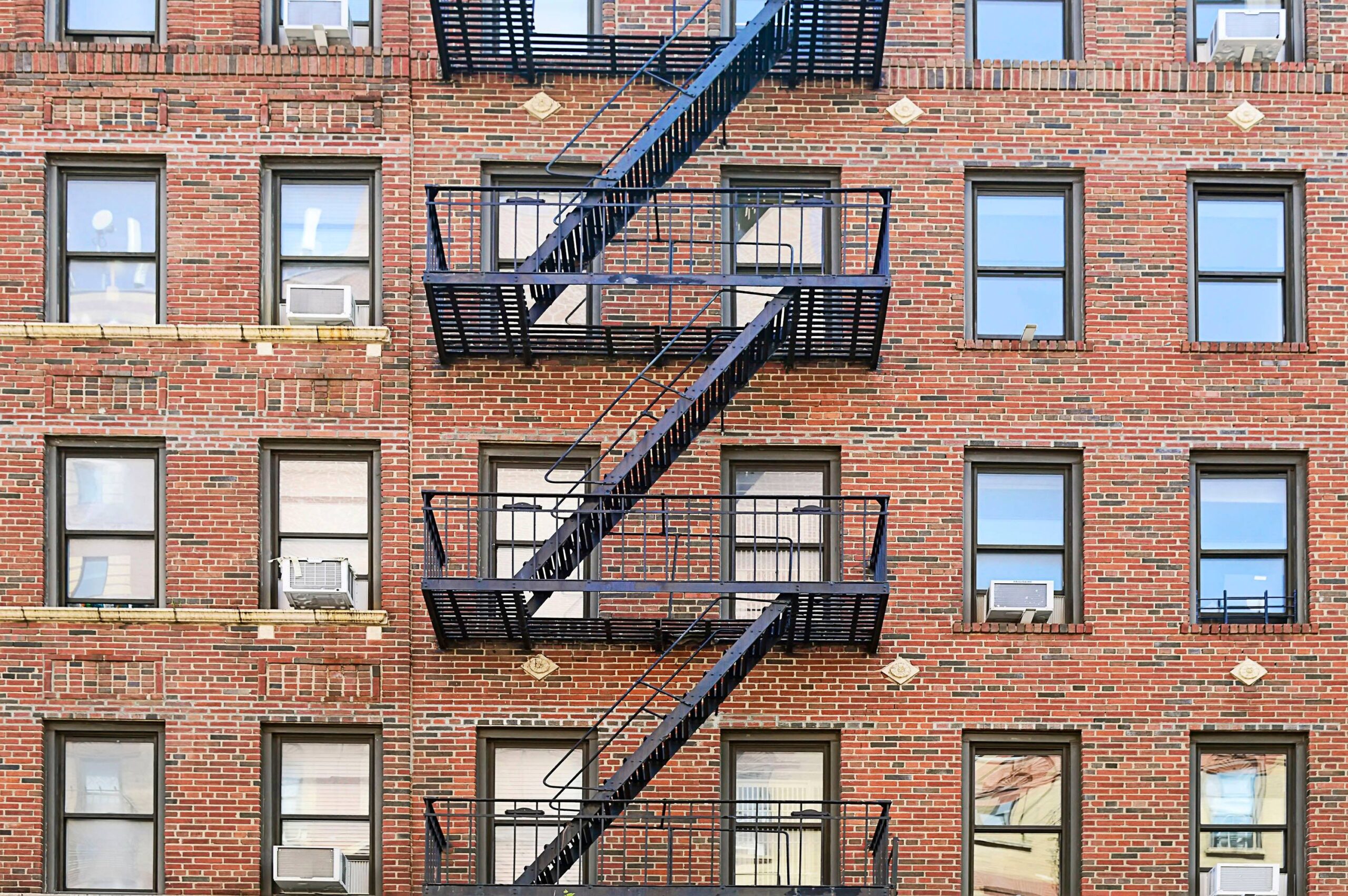
In the bustling urban landscape of Hoboken, New Jersey, the structural integrity of buildings is of paramount importance. City Ordinance 14.117 establishes guidelines to ensure the structural adequacy and safety of fire escapes, exterior bridges, and egress balconies. According to these regulations, property owners are mandated to have their structures examined and/or tested every five years by a qualified professional engineer. Here is a synopsis of the New Jersey Department of Community Affairs (NJ DCA) requirements and the additional standards set by the FTO3 Hoboken, shedding light on the Visual Only Inspections, Invasive Inspections, and Full-Scale Load Testing processes mandated for fire escape inspections.
NJ DCA Requirements
The NJ DCA plays a pivotal role in establishing statewide regulations that ensure the safety and structural integrity of buildings, especially those with external elements such as fire escapes. City Ordinance 14.117 aligns with NJ DCA guidelines, emphasizing the need for a thorough inspection every five years. The responsibility for this examination falls on the shoulders of a qualified professional engineer, ensuring that the assessment is conducted by an individual with the expertise to identify potential structural issues and recommend appropriate remediation.
Visual Only Inspections
Visual Only Inspections serve as a foundational aspect of the fire escape examination process. During this phase, the structural engineer visually assesses the condition of fire escapes, exterior bridges, and egress balconies without physically altering or testing them. This inspection aims to identify apparent signs of wear and tear, corrosion, or any visible damage that may compromise the structural integrity of the elements in question.
The engineer will scrutinize the connections, welds, bolts, and overall condition of the fire escape system. Any issues discovered during the Visual Only Inspection may prompt further, more invasive examinations to determine the extent of the problem and develop a comprehensive plan for remediation.
Invasive Inspections
When visual inspections reveal potential concerns or if a fire escape system has undergone significant wear and tear over the years, the NJ DCA mandates Invasive Inspections to assess the internal condition of the elements. Invasive inspections involve limited dismantling or opening of specific components to inspect hidden areas that may not be visible during a standard visual examination.
Structural engineers may disassemble certain sections of the fire escape, focusing on critical joints, welds, and connections. This process allows for a more in-depth evaluation of the structural components, ensuring that any hidden defects or weaknesses are identified and addressed. Invasive inspections are crucial for a comprehensive understanding of the fire escape system’s overall health and are instrumental in determining the necessary corrective measures.
Full-Scale Load Testing
As an additional layer of scrutiny, Full-Scale Load Testing is mandated by NJ DCA requirements to validate the structural integrity of fire escape systems. This involves subjecting the fire escape, exterior bridges, or egress balconies to simulated loads to ensure they can withstand the specified weight and stress levels. Full-Scale Load Testing provides a practical assessment of the structural capacity of the elements and helps verify their compliance with safety standards.
During load testing, engineers carefully measure the deflections, deformations, and responses of the fire escape system under controlled stress conditions. This process allows for a quantitative evaluation of the system’s performance, helping to identify any weaknesses or deficiencies that may compromise its ability to support the required loads during an emergency evacuation.
Compliance with NJ DCA requirements and FTO3 Hoboken standards for fire escape inspections is essential for ensuring the safety and structural integrity of buildings in Hoboken. The Visual Only Inspections, Invasive Inspections, and Full-Scale Load Testing processes, carried out by qualified professional engineers, collectively contribute to a comprehensive assessment of fire escape systems.
These measures not only identify existing issues but also proactively address potential concerns, reinforcing the commitment to public safety in the urban environment. Property owners and managers must recognize the significance of these inspections and work in collaboration with structural engineers to uphold the highest standards of structural safety in their buildings.
